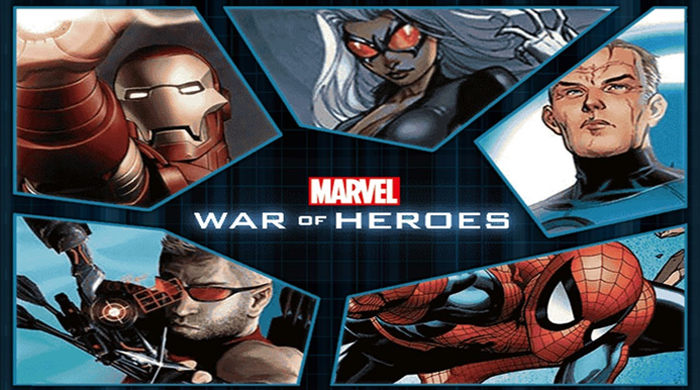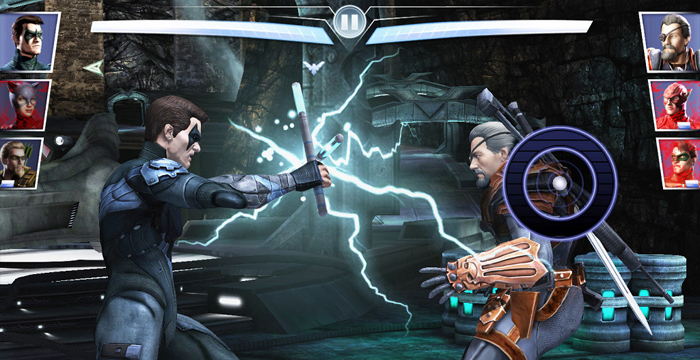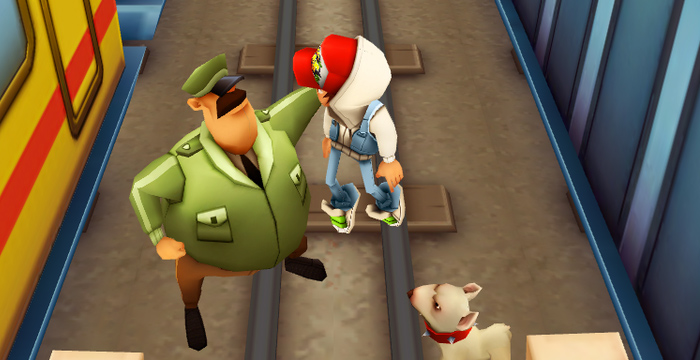· 9 min read
A Guide to the Top Grossing Games on the AppStore (Part 2)
Jens Peter
Jens Peter Jensen finished a MSc in Game Design in 2012 at ITU Copenhagen and has ever since been on a quest to better understand games and especially their players.
The lay of the grossing land
To identify and classify the types of games present on the Top 100 Grossing games list, we have played and divided them based on the gameplay and game mechanics they use and also based on their monetization strategy.
The types found do not represent the whole range of types available on the App Store. They only represent the games present on the Top 100 Grossing list at the time of the survey. Here follows a listing and explanation of the different types of games on the top, and their “share” of the total amount of 115 surveyed games. By playing these games the following 12 types were identified:
Casino – 11% of top 100
The Casino Game type emulates games that can be played at a casino. The main type of games available are slots, Texas Hold ‘Em poker and Bingo. This type is pretty self explanatory as it strives to be a close replica of the “real” casino games.
The Casino type monetizes by selling playing chips to the players, again just like its real world counterpart. They also rely on a form of in-game currency (IGC) that gives different kinds of special advantages to the player. The major difference from the real world counterpart is that there is no real money payout option. That means that the players use real money to gamble, without the possibility of winning real money.
The game mechanics are made to closely resemble the real world games they mimic, like Poker, Blackjack and Slots. There are a limited number of options and the player just chooses one by pressing a button. These games resemble Internet gambling sites in all respects, sans the payout option.
The main monetization strategies used in Casino Games are getting the players to buy more playing chips to gamble for and getting them to use in game currency to get advantages in the gambling games.
Like for instance the opportunity to win bigger prizes in slots, or even just to play games. So, in essence, the players are paying for the privilege to play, without the possibility of winning anything back. The players play for real money or in-game currency and are paid in “chips” with no other value than to initiate new matches in those specific games.

Casino Games examples: Slotomania – Slot Machines, Big Fish Casino – Free Slots, Poker by Zynga, Jackpot Party Casino, Slots – Pharaoh’s Way, DoubleDown Casino – Slots & Video Poker, Bingo Bash, GSN Casino, Texas Poker, Bingo!™, BINGO Blitz – FREE Bingo + Slots, Slots™, Fresh Deck Poker
Collect and Combat (Pokemon clones) – 15% of top 100
In Collect and Combat games the player fights to collect creatures of some sort and then uses them to fight and collect even more creatures.
There are two main varieties within the Collect and combat type, one is the “card” type and the other is the “band” type. In both types there is a tendency of using sexually suggestive anime art, as some developers seem to believe that a sexualized art style will further motivate player to collect more creatures.
Within “card” type games, the player is represented by one of its collected creature and can do quests or PVP fights with it. Within “band” type games, the player chooses several different creatures to send on quests or PVP matches for him.
The goal for both types is to gain creature experience and to get more creatures. The player can also combine two of the same creatures to make a higher tier creature of that type. Or they can sacrifice some creatures to give another creature more experience. The quests are designed with some variety in mind, but it basically boils down to tapping for next action. The combat itself is mostly just tap to attack and lacks any tactical aspect.

As the main motivation of Collect and Combat games is to get more and stronger creatures, the main monetization strategy is to offer rare and powerful creatures to the player in exchange for in-game currency. There are also a variety of advantages like player buffs and the like available in both quest and PVP, but the main monetization angle is the accumulation of more creatures.
Collect and Combat examples: Rage of Bahamut, Marvel WoH, Reign of Dragons, Legend of the Cryptids, Lord of the dragon, Legend of the Cryptids, War of the Fallen, Deity Wars, Pantheon the Legends, HellFire, Pirate Maidens, Transformers Legends, D.O.T., Immortalis, Ayakashi: Ghost Guild, Book Of Heroes, Blood Brothers (RPG).
Controller Emulator (envy) – 16% of the top 100
Controller emulator games are games that are played on a virtual controller of some kind on the mobile device.
At a first glance, the games in this category are very varied, but the fact that the main game mechanic is a virtual controller makes them closely related on a gameplay and mechanics level. There is also a variation where the gameplay traditionally uses a controller, but the basic game design has been changed to accommodate the mobile device platform.

Both types seem to suffer from a form of controller envy, hence the title of the category. These games have a gameplay that is too complex or demanding to use the standard “tap and swipe” interface that mobile devices use, and have therefore made some kind of virtual controller interface on the device.
There are many different kinds of games in this type, racing, fighting, shooting, platformer and others. But they all share the common factors of having a virtual controller and of being speed and skill based games.
One main monetization strategy in these games is unlocking more content. More cars, more weapons, skills, levels and characters. Some of the content can be unlocked by grinding the game for hours, while others are only available by the use of in game currency.
While there is room for a lot of variation in this category, most of the games here use an energy system that limits daily playtime. If the game can get the player to want to play more, the player will definitely buy more energy to continue playing. A secondary strategy is to offer the player advantages which unlock content faster or limit the grinding.
Controller Emulator(envy) Games examples:
- Racing: CSR Racing, Fast & Furious 6: The Game, Real Racing 3, Need for Speed™ Most Wanted, Downhill Supreme, Bike Race Free by Top Free Game, Hill Climb Racing
- Action: D-Day, Frontline Commandoes, Hungry sharks, Sonic The Hedgehog, FIFA SOCCER 13 by EA SPORTS, Ironman 3 – The Official Game, Grand Theft Auto: Vice City, Battlestone, Injustice: Gods Among Us, Punch Quest
- Builder Worlds: Minecraft – Pocket Edition, Survivalcraft
Lane Runners – 3% of top 100
The Lane Runner type is a game where the player moves automatically along a predefined track with either one or more lanes, usually three, and has to avoid obstacles while constantly moving forward. The gameplay consists of swiping the screen to direct the playing character left, right up or down in order to avoid obstacles and collect “coins” and such.
This type represents a small share of the top 100 grossing titles, but it is established and easily recognizable.
The main monetization strategy of the Lane Runner is convincing the player to buy an extra life when he dies in order to continue playing. The monetization strategy is complementary to the gameplay of running forward at a fast pace. When the player dies, the game stops and offers you the chance to continue for the price of some in-game currency. In this way, the Lane Runners are similar to the old arcade games, where the player had to insert coins to continue.

Lane Runner examples: Temple Run 2, Vector, Running with Friends, Subway Surfers
Match Three – 7% of top 100
The Match Three type is perhaps the most famous and easiest recognizable type of them all. The gameplay is based on matching three or more entities of the same color or type to get points or clear away the level. This type of game has long enjoyed strong popularity on Facebook and has been played heavily by the casual gamer in the last 5 – 6 years. There isn’t room for much variation in gameplay for this type. They all follow the same established canon for Match Three games: swipe to rearrange the pieces in a 2D grid, in order to align them in a row. Sometimes the levels are time based, sometimes they are achievement based, but they never stray from the formula. The games differentiate themselves by having different themes and art styles, although many games prefer to mimic the style of established titles so as to get traction through similarity.

There are two main monetization strategies in the Match Three type: one is the play advantages making the game easier in different ways. The other is the energy approach where the player has energy or lives and loses them by playing or failing to complete a level, and can only refill by using in game currency. Looking at games on the chart, such as Candy Crush Saga, it seems that the refill approach is the most successful.
Match Three examples: Bejeweled, Candy Crush Saga, Puzzle & Dragons (English), Bubble Mania™, Fruit Mania™, Diamond Dash, Gems With Friends, Gems With Friends Free
In the third and last part of this article we will go through the remaining seven types that we identified and then we will draw the much wanted conclusions. So stick around!